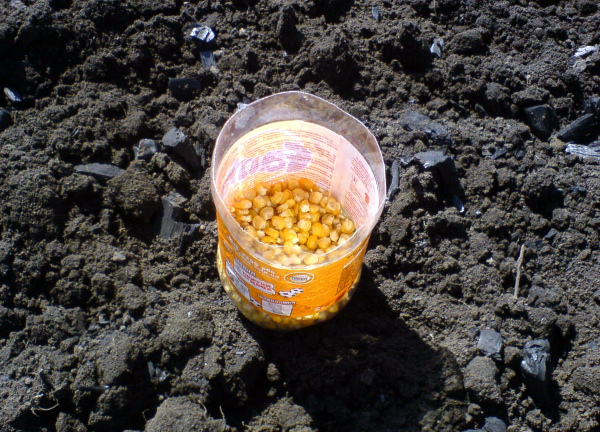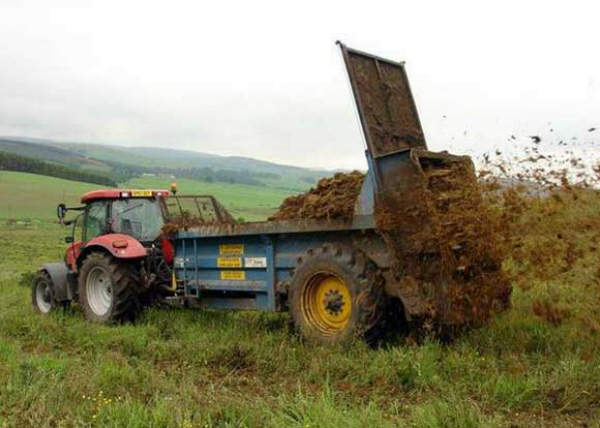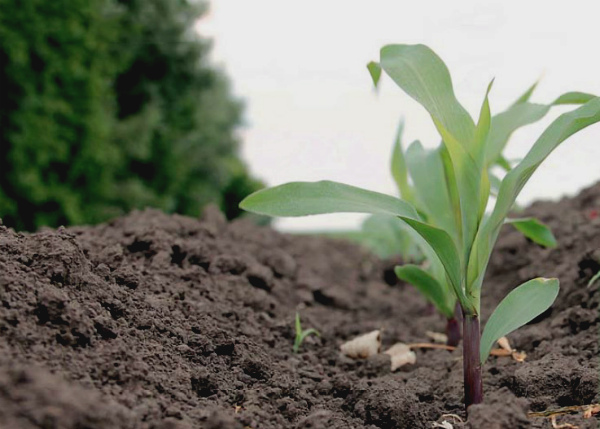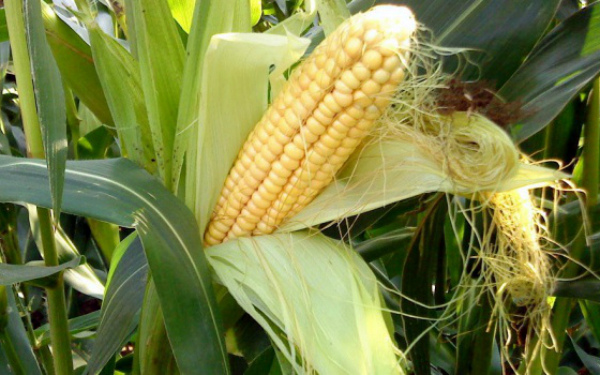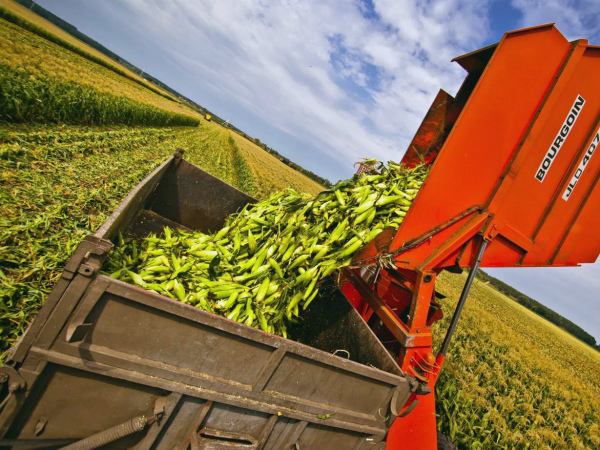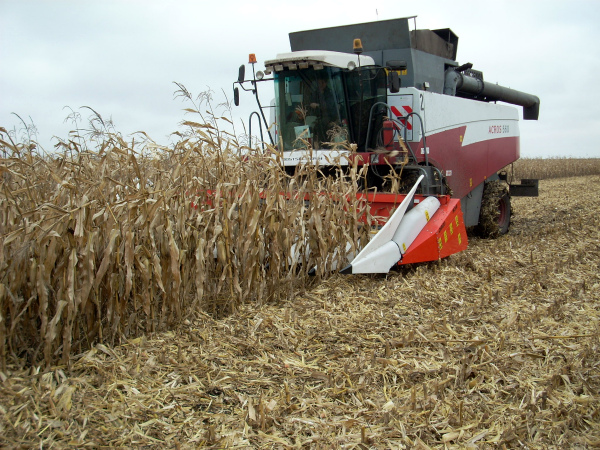What is the yield of corn per hectare?
Content
Features of growing corn
The main requirement when growing corn is watering. Water should be well watered at least twice during the growing season of planting. There are varieties that are more demanding on the amount of moisture that require 3-4 watering per season, which nevertheless performed well in 2021: Collective 181, Bemo 182, Dokuchaevsky 250.
In addition, to get a good harvest, you need to choose the right soil composition. First of all, you should take care of the air regime, because the harder and more "monolithic" the soil, the worse the roots and stalks of corn will develop. The recommended minimum oxygen content is at least 5%, and the optimal one, at which the crop shows the best yield per hectare, is 20%. Therefore, it is recommended to carry out deep plowing of the soil on the eve of planting, at least 30 centimeters in depth.
In the spring, even a hint of weeds must be eradicated, as they will spoil the grain you sow. This is done twice: for the first time, the soil is cultivated during harrowing to a depth of 15 centimeters, the second time - just before planting at a depth of sowing of grains (about 12-13 centimeters). The concentration of herbicides should be calculated according to the instructions and scaled to 1 ha.
Returning to the topic of soil composition, it is worth noting that corn does not like acidic soil. Therefore, it is important to carry out liming if the acidity of the soil is high, otherwise, even with the introduction of mineral and organic fertilizers, you will not achieve much success in growing this crop. Throughout the season, you need to maintain a stable level of soil saturation with nutrients, until the grain reaches waxy ripeness.
The topic of fertilizers also requires a more detailed study: for 1 hectare (hectare) of plantings, about 40 tons of manure will be needed for the average yield to rise by 5-10 centners. A large amount of organic fertilizer is needed when growing silage maize. In this case, it is best to cultivate a crop in near-farm crop rotations in Russia or in areas with a high level of organic matter and minerals. When sowing corn grain after manured crops, only mineral fertilizers can be applied.
Nitrogen fertilizers are most effective in areas with sod-podzolic and depleted chernozem. For carbonate chernozems, it is better to choose phosphorus.
When growing corn for grain, keep in mind that this is a heat-loving crop that needs an air temperature of at least 10 ° C for the seeds to germinate. Despite the general drought resistance of varieties grown for grain, at least 500-600 millimeters of precipitation will be required to obtain a yield of 85–95 centners per hectare. At the same time, it is important to understand that an abundance of moisture will contribute to the active growth of green mass, which can negatively affect the illumination of plants.
It is best to plant the crop after winter wheat, pulses, potatoes grown in 2021. You can also grow corn for grain after spring wheat, sugar beet. But for growing corn for silage, cereals and legumes should be chosen as predecessors. Conversely, do not plant after beets and sunflowers as they drain the soil.
To get silage, you should carefully choose a variety, paying attention to fodder qualities, immunity, and weather resistance. It is imperative to calibrate the grain for planting. Soil temperature should be at least 10-12 ° C.
Make a stock of herbicides in advance, since it will not be possible to grow corn for silage in Russia without them. A continuous herbicide should be applied to the site immediately after harvesting the previous plant in 2021. You can use the preparations "Titus", "Primextra Gold", "Basis".
Video "How to Surprise Your Neighbors with a Corn Harvest"
In this video, you will learn why corn is so popular, how to grow it to get a good harvest, and how to cook it.
Growth phases
Unlike many crops, maize has 6 growth phases, which have a big impact on the final yield that you can harvest from 1 hectare.
Corn seedlings appear at about 7 days in good weather and proper seed preparation, or at 15 if the weather is not warm. In the future, the number of leaves helps to navigate in the growth stage of the culture.
The next phase is 5-6 leaves, when the growth of the stem and leaves slows down somewhat, since the roots are actively growing. They consist of several tiers, branching abundantly as the plant develops. Primary roots appear from the germinated seed, they are located on the "second" tier, from which nodal roots are formed, the so-called "third" tier. There are also support roots that give the plant its stability during the growing season.
The next stage is the formation of 8 leaves, when the aerial part begins to actively develop again. In this phase, the plant forms a large number of stepchildren, which die off at the end of the season.
The crop yield determines a short period (about 10 days) before flowering, as well as a longer period (up to 20 days) after flowering. It is in this phase that it is determined how much centners of grain can be obtained from 1 hectare.
The flowering stage occurs in this way: the panicle (male inflorescence) forms pollen, and then drops it on the ear (female inflorescence). This happens within 8-9 days, accompanied by the appearance of filaments.
Once the cross-pollination is successfully completed, the grain filling phase begins. Corn goes through three stages of ripening: milk, milk-wax, waxy. Grain picks up nutrients from the plant, and how much of them will depend on how well you fertilized the soil.
The final stage of corn growth (and it doesn't matter if you grow it for grain or for silage) is the formation of a black point. This is the area at the base of the caryopsis, which means the ear is fully ripe and ready to either go to silage or provide you with juicy grain.
Productivity of various types
The choice of the variety depends on the needs. To obtain grains, early ripening hybrids are chosen, since they have time to ripen before the onset of the dry period in Russia. In addition, they show the highest yield per hectare. Among the best varieties should be noted Collective 181, Bemo 182, Dokuchaevsky 250, Korsar.
Of the varieties that showed the highest yield on the territory of Russia in 2021, the first place is taken by Lakomka 121. This variety takes 75 days to grow, while being highly resistant to diseases. The height of the bush reaches 1.5 meters, and the ears grow up to 20 centimeters. The grains taste sweet, juicy, well suited both for canning and for boiling at the stage of milk ripening. The yield per hectare in 2021 is 45-55 centners.
Another excellent variety is Spirit. It is planted in seedlings at the end of April. For full ripening, the variety needs only 50-60 days, and in any region of Russia. In height, it grows up to 2 meters. The coarse-grain cobs are up to 20 centimeters long. It tastes very sweet and juicy. The yield of the Spirit variety in 2021 reached 60-70 centners per hectare.
To obtain silage, late-ripening varieties are planted. Given the different climatic conditions in the regions and the general trend emerging in 2021, you can plant them interspersed with early and mid-season varieties to get not only silage, but also ripe ears. It is the mixed crops that will help ensure the highest plant productivity per 1 hectare of land.
It should be noted that late-ripening varieties provide good moisture content of the greens, which allows obtaining good quality silage. Also, the harvest in 2021 showed that it is possible to harvest high quality silage from 1 hectare, collecting cobs of milky-wax and waxy ripeness.
When calculating the fruiting of corn fields, try not to experiment and use varieties tested in 2021 that consistently yield at least 50 centners of grain per hectare.
Video "How fertilizers affect the grain corn harvest"
This video is about how the yield of a crop changes when different types of fertilizers are applied.

